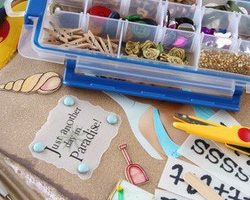How to Find Arts and Crafts Supplies
About 20 years ago, I was playing around with the idea of buying a florist business. I eventually didn’t go through with it as I was breaking the cardinal rule of owning a business – that of having good practical experience. My total amount of floral experience was limited to occasional purchases from the area wholesale florist. During my interview with the owner, I asked her how I could find floral-related vendors. Her response:‘Don’t worry – they’ll find you!”.
If you’ve been in business any length of time, you know how true this is. However, you need to scare up some potential arts and craft supplies vendors and request price lists before you start your arts and crafts business. There is no way you can take even the first step towards starting a business unless you know how much it’s going to cost you to make your product.
Arts and Craft Supplies Instructor Referrals
Instructors at arts / crafts classes or seminars are great referral sources for tools, art supplies and craft materials. Since the instructor has so much experience in the field, they should have an encyclopedic knowledge of the best vendors in your arts/crafts area. Most likely, they’ll have a handout addressing this issue they’ll distribute the first night of class.
Arts and Crafts Books and Magazines
Flip through any arts/craft specialty magazine and you’ll see numerous advertisements by arts and crafts supplies vendors. The more tailored the magazine to your particular area of interest, the more useful the advertisements. Check them out – but keep in mind that as your business grows you’ll want to find vendors selling wholesale. Most advertisers in these magazines gear themselves towards the casual hobbyist.
Most arts/crafts books have a resource section in the appendix listing supply vendors. You don’t have to lay out the money to purchase many different books. Pay a visit to your local library and borrow the books or use the library copier to make copies of the applicable info. Make sure the book is current (my suggestion – published within the last year) so you don’t waste your time tracking down a bunch of defunct vendors.
Online Arts and Crafts Supplies Vendors
Your first online search should be the Guide who writes about your craft. Most Guides have resource links with plenty of vendor suggestions. For example, check out Painting Guide Marion Boddy-Evans’ What Art Supplies Do You Need to Start Painting? article.
Do a key phrase search by Googling ‘wholesale xxx supplies’ and see what comes up. I’ve not found that Googling is the best way to find full service arts/crafts vendors but it’s worth a shot. I also occasionally check out suppliers selling through eBay, Etsy and ArtFire.
Finding Arts and Crafts Supplies Vendors Through Trade Organizations
If you haven’t already, you should join some of your industry arts/crafts organizations. Besides keeping up with your industry, they are a great place to find wholesale vendors. You’ll also find links to other online resources serving your particular art/craft.
For example, The Ganoksin Project has a resources page with a comprehensive guide to industry websites . While tailored to the jewelry making industry, many of the vendors listed provide materials and supplies for other types of arts/crafts also. The Society of American Silversmiths also has fantastic resources for artists such as technical information and how to purchase hard-to-find goods and services.
I know from experience that it can be just plain hard to find exactly what you’re looking for. Worse yet is when you find the perfect vendor only to find out they won’t sell to your business because it’s too new or unknown or their minimum order is too big. My best advice is to just keep on looking until you find what you need, go to as many trade events as possible and make industry contacts by joining trade organizations.



